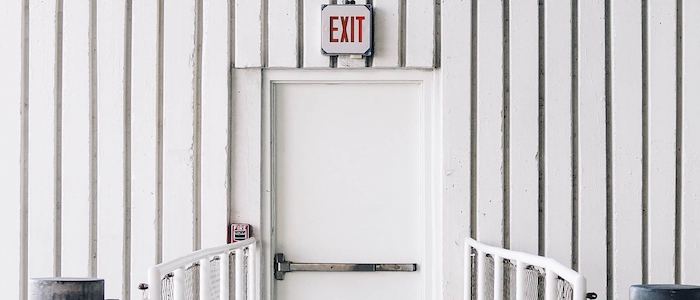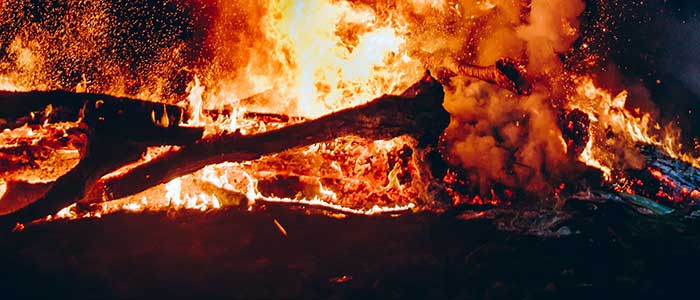Dashpivot article – Fire Door Installation requirements

Fire Door Installation requirements
What is the Purpose of Knowing the Installation Requirements for Fire Doors?
It’s crucial to know the installation requirements for fire doors in the UK as failing to comply can lead to penalties and fines issued from fire safety authorities. Building owners and persons responsible must comply with the fire door installation requirements indicated in the Fire Safety Order (FSO) regulations also including other regulations like the Part B Building Regulations.
A fire door is an important element in a building’s passive fire protection system that prevents fire and smoke from spreading, giving occupants enough time to evacuate, and providing a safe passage to escape routes. Knowing the installation requirements ensure that the fire doors are performing according to manufacturer’s specifications and minimises the liabilities and costs building owners, managers, and contractors may hold in case there are injuries resulting from a fire.
Note that this article is mostly focused on fire door installation requirements and fire door regulations in the UK. While most of the detail is applicable to all regions, there are regional nuances.
What are the General Fire Door Installation Requirements?
The general requirements for fire door installations are guides to make sure that the fire doors being installed are approved according to the UK regulations and function properly even after installation. These should be thoroughly observed by the building owners, developers, inspectors, and maintenance staff from pre- to post installation.
Fire doors must be installed correctly and properly by certified professionals in a fire-resistant frame that has the same rating as the fire door. Intumescent strips and smoke seals must also be installed around the door or within the frame. The fire door must have the complete components like the self-closing devices and door closers, and should allow the fire door for smooth closing. The clearance gaps between the door and door frame should be consistent. It’s essential to check the UK standards or the manufacturer’s guidelines for the acceptable clearances. Another thing to take note upon installation is the mandatory clearly visible signage that typically says “Fire Door Keep Shut” on some doors.
Fire doors must have a marking or certification indicating that it meets the performance standards. Typically there is a CE marking. All fire doors must comply with Part B of the UK Building Regulations.
After installing, the fire doors should be regularly inspected and maintained. Building managers should ensure that each and every fire door is fully functional and operational.
What are the Different Types of Fire Doors in the UK?
The fire doors in the UK are categorized by the length of time they can withstand fire and smoke. These are FD30, FD60, FD90, and FD120. The numbers indicate the total minutes of fire protection. The FD30 is usually suitable for smaller buildings, while the rest are for larger rooms.
Fire Door Installation Best Practices
One of the best practices is to hire qualified and certified fire door installers who have ample experience in the field. They should be certified by the BM Trada Q-Mark or FIRAS. Aside from that, they are knowledgeable and aware of the manufacturer’s installation guidelines and always follow through because each fire door has specific requirements for installation.
Building owners should be aware of the types of fire doors being supplied and if they are correct for the type of building or space. All the door hardware should be certified, fire-rated, and compatible with the fire rating of the fire door.
It’s essential that after every installation, installers should double-check and test if all mechanisms are fully functional. The door should operate smoothly without any jam. It should be practiced to perform multiple self-closing tests to make sure that the door closes on its own from any position.
There should be routine inspections and maintenance to make sure that there are no damages on the door. Any slight damage may cause improper function, which in turn could cost lives. Repairs and replacements should be performed as soon as possible. Each and every inspection or maintenance work should be properly logged and recorded.
It may not seem important, but the signages should be visible and durable as well. There should be no other types of texts attached on the door.
Building owners and facility managers should ensure that all fire doors are compliant with the UK Building Regulations or other regulations related to fire doors. The recorded documents and forms provide proof that the management and building owner continuously complies with the UK Building Regulations.
What Certifications and Third-Party Accreditations for Fire Door Installations are Needed for Compliance?
It’s essential that the fire doors are regulated by parties that ensure the safety and compliance of fire door installations. They cite the regulatory standards all fire doors and installations must have in order to prevent the spread of fire and smoke, and protect the lives of the occupants. Certifications are recognized by recognized bodies and they provide proof that these buildings adhere to the safety standards in the UK.
CE Marking
The CE marking indicates that the fire door meets the health, safety, and environmental protection standards within the European Economic Area (EEA) and to achieve this, the fire door must pass the test under the BS EN 16035 standard which is the fire resistance standard for fire-resisting performance of pedestrian doorsets. This is a mandatory requirement for all fire doors in the UK.
British Standards Institution (BSI)
The BSI provides certification for fire door installations under the BS 8214:2016, which is the Code of Practice for Fire Door Assemblies, the BS 9999:2017, which is the Code of Practice for Fire Safety in the Design, Management, and Use of Buildings, the BS 476-22:1987, which is the Fire Resistance of Building Materials and Structures, and many more. Building owners, developers, contractors, and installers should ensure that they adhere to the key standards for fire door installation in the BSI.
FIRAS
The FIRAS Certification is a third-party certification scheme for companies that install passive and active fire protection systems, and it focuses to make sure that the fire protection operation in buildings comply with the safety standards. Being issued a FIRAS Certification indicates that the work is competent and compliant.
Certifire (Warringtonfire)
Certifire is a this-party certification scheme that makes sure Fire Doors, Windows, Insulation, and Glazing adhere to the standards, pass the test methods, and hold the highest quality and reliability. Fire doors undergo testing such as fire resistance, smoke control, and durability assessments.
There are many more certifications for different standards in the UK and it’s important to consult a professional before purchasing and installing fire doors in the building. The key is to make sure that the fire doors are installed correctly, will perform as intended, and most importantly assure the safety of the occupants.
What are the Legal Consequences of Non-Compliance for Fire Door Installation?
Failure to comply with any of the standards for fire door installation, whether installation, maintenance, or incorrect usage, the local fire authority can issue notices and fines.
In worst cases such as putting lives at risk, there could be prosecution under the Fire Safety Law and buildings owners, business owners, or the building managers may be held liable. In the event of death, responsible individuals could face custodial sentences.
How can Digitized Forms Make it Easy for Your Team to Document Fire Door Installations and Stay Compliant with the UK Standards?
Transitioning from paper-based systems to digitised forms, buildings owners, facility managers, installers, and maintenance staff can streamline processes ensuring regulatory compliance. Typical fire-based safety processes which get digitised for technicians and safety professionals include fire door installation checklists, like this template.
With your own customised digitised forms, like a Fire Door Installation Form or Document, you can create checklists, inspection logs, photos, comments, information, and more. You can create photographic evidence documents to keep track of all fire door installations in the building while staying compliant with the UK standards. It has tags, mark-ups, and GPS, the essential components needed for photographic evidence.
Easily create your own reports for audit and compliance by making use of the dashboards and charts that you can create easily from your data forms. Make informed decisions and implement corrective actions if the data being collected do not meet the regulations.
You have mobile access and on-the-go tracking of all documents in your database. You will never lose your documents with digitised forms.
Browse some of our fire installation process frameworks below, which you can try for free.

Q Mark Fire Door Installation template
Achieve Q Mark certification by using this digital Q Mark Fire Door Installation template.

Fire Drill Report template
This fire drill report template makes your fire drill reporting more complete and more actionable.

Fire Evacuation Plan template
Use this fire evacuation plan template to create comprehensive site or project specific fire evacuation plans.